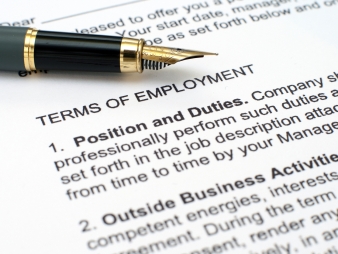On March 27, 2020, President Trump signed into law the Coronavirus Aid, Relief, and Economic Security (CARES) Act (often referred to as the stimulus package).
Included in the $2.2 trillion stimulus package are provisions aimed at incentivizing businesses to retain workers despite the economic downturn caused by the COVID-19 pandemic. Discussed below are two such provisions.
The Paycheck Protection Program
The Paycheck Protection Program expands eligibility for Small Business Administration (SBA) loans and is meant to incentivize businesses affected by the pandemic to keep employees on the payroll, or to bring back employees who have been laid off recently due to the pandemic.
Small businesses of 500 employees or less can receive loans, with an interest rate not exceeding 4%, to cover payroll and other qualified expenses, including costs related to the continuation of health care benefits, employee compensation (not to exceed $100,000 per employee), mortgage interest obligations, rent, and utilities, as well as interest on debt incurred before February 15, 2020. Qualified wages do not include those paid and for which a credit is allowed under provisions of the Families First Coronavirus Response Act.
The loans will be provided by lenders approved for the SBA’s Section 7(a) loan program. The CARES Act does provide, however, that the authority to make loans under the Program shall be extended to additional lenders determined by the SBA Administrator and the Secretary of the Treasury. Thus additional lenders may be added to help with the expected surge of loan requests. Payment of principal and interest is deferred for at least six months, and a significant portion of the loans is subject to forgiveness if goals are met relating to job retention, as set forth below.
Sole proprietors, independent contractors, and certain self-employed individuals are also eligible for loans, with proper documentation. Also eligible are 501(c)(3) nonprofits, 501(c)(19) veterans organizations, and Tribal business concerns as defined in the Small Business Act with not more than 500 employees, or the applicable size standard for the industry as provided by SBA, if higher.
There is a special eligibility rule for businesses in the hospitality and dining industries. For businesses with more than one physical location, if the business employs 500 or fewer employees per location and is in the Accommodation and Food Services Industry (NAICS Code beginning with 72), the business is eligible to receive a loan.
To obtain a loan, an applicant must certify that: (a) the uncertainty of current economic conditions makes the loan request necessary to support the company’s ongoing operations; (b) the funds will be used to retain workers and maintain payroll or make mortgage payments, lease payments, and utility payments; (c) the applicant does not have an application pending elsewhere; and (d) has not received funds from another source, for the same purpose which would provide duplicate payments.
The maximum loan amount is determined by a formula, which is: 2.5 times the average total monthly payroll costs incurred in the one-year period before the loan is made, plus the outstanding amount of a loan made under the SBA’s Disaster Loan Program between January 31, 2020, and the date on which such loan may be refinanced as part of the new Program. Loans are capped at $10 million.
No collateral or personal guarantee is required for a loan. The CARES Act also waives both borrower and lender fees for participation in the Paycheck Protection Program and also waives the “credit elsewhere test” for funds provided under the Program. Prepayment penalties are also waived.
To incentivize employers to retain or re-hire laid-off workers, a significant portion of the loan is forgivable. Subject to certain conditions, all or a portion of the loan is forgivable for amounts spent, during an eight week period after the loan origination date, on rent, payroll costs for employees (not to exceed $100,000 per employee), interest on a mortgage, and utility payments.
Forgiveness amounts will be reduced for employee cuts or reductions in wages. For those employers laying off workers due to the COVID-19 pandemic between February 15 and one month after the enactment of the CARES Act, those employers may avoid this penalty by re-hiring those workers who were laid off or by making up for wage reductions by June 30, 2020.
Certain documentation is required in order to apply for loan forgiveness, including but not limited to: documentation verifying employees on payroll and their pay rates, documentation verifying covered costs and payments, and certification from a company representation that the documentation is true and accurate.
Regulations providing more detailed instructions for lenders and borrowers are required to be issued by the SBA within 15 days enactment of CARES.
The Employee Retention Tax Credit
Pursuant to the employee retention tax credit provision of the CARES Act, businesses may be eligible for a 50% refundable payroll tax credit on up to $10,000 of qualified wages per employee.
The credit is available to employers whose (1) operations were fully or partially suspended, due to a COVID-19-related shut-down order, or (2) gross receipts declined by more than 50 percent when compared to the same quarter in the prior year.
For eligible employers with less than 100 employees, all wages should qualify for the credit. For employers with more than 100 employees, qualified wages are those paid to an employee when they are not working due to COVID-19.
The credit is provided for wages paid or incurred from March 13, 2020, through December 31, 2020.
Please check with the attorneys at Critchfield, Critchfield & Johnston, Ltd. with questions about the potential applicability of these programs for your business.
Tagged In:CARES ActEmployee RetentionPaycheck Protection ProgramPPPSBA LoanTax Credit




